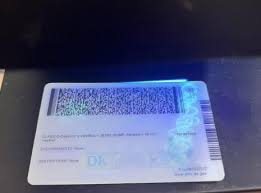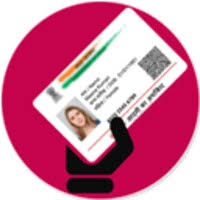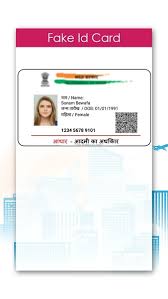documents needed for ohio driver's license
Obtaining an Ohio driver's license is a significant milestone, whether you’re a new resident or a young adult applying for your first license. However, the process can be overwhelming if you’re not familiar with the requirements. Fortunately, this guide will demystify the process and help you gather all the necessary documents, making your visit to the Ohio Bureau of Motor Vehicles (BMV) as smooth as possible.
Understanding the Importance of Proper Documentation
The Ohio BMV requires specific documents to verify your identity, residency, and legal status in the United States. These documents ensure that only eligible individuals receive a driver's license, which is vital for maintaining security and trust in the state’s identification system. Preparing the correct paperwork in advance can save you time and frustration at the BMV office.
Essential Documents for Proof of Identity
The first step in obtaining an Ohio driver’s license is proving your identity. This proof is necessary to confirm who you are and to protect against identity theft. You’ll need one of the following documents:
U.S. Birth Certificate: A certified copy from the vital records office in the state of birth is required. Hospital-issued birth certificates are not accepted.
U.S. Passport or Passport Card: This must be valid and unexpired. It’s one of the easiest ways to prove your identity as it’s a universally accepted document.
Certificate of Naturalization or Certificate of Citizenship: If you were born outside the U.S. and later became a citizen, these documents are valid proof of your identity.
Permanent Resident Card (Green Card): For non-citizens who are permanent residents, your Green Card will suffice.
Proof of Legal Presence in the United States
If you are not a U.S. citizen, you’ll need to provide proof of your legal presence in the country. This is an essential step for anyone who is not a natural-born citizen, ensuring that all drivers are legally authorized to be in the U.S. Acceptable documents include:
Unexpired Employment Authorization Document (EAD): This document, issued by the United States Citizenship and Immigration Services (USCIS), proves that you are allowed to work in the U.S.
Unexpired Foreign Passport with Visa: If you are in the U.S. on a visa, your unexpired foreign passport combined with your I-94 form or visa will be necessary.
Form I-94: This form is issued to visitors and immigrants upon entry into the U.S. and must be presented alongside your foreign passport.
Proof of Ohio Residency
Once your identity and legal presence have been verified, the next step is to prove that you live in Ohio. The BMV requires proof of residency to ensure that you are a resident of the state before issuing a driver’s license. You’ll need two documents from the following list, each showing your name and Ohio address:
Utility Bill: This includes gas, electric, water, or cable bills. The bill must be recent and show your Ohio address.
Bank Statement: A statement from any financial institution, dated within the last 60 days, showing your Ohio address will be accepted.
Lease or Rental Agreement: A lease signed by both the tenant and landlord, listing the Ohio property address, can serve as proof of residency.
Ohio School Transcript: If you are a student, a transcript from an Ohio school can also be used to establish residency.
It’s important to ensure that the documents you bring are current and accurately reflect your Ohio address. Outdated or incorrect documents may result in delays or the need for a return visit to the BMV.
Additional Documents for Specific Situations
While the above documents are typically required for most applicants, certain situations may require additional paperwork:
Name Change Documentation: If your name has changed due to marriage, divorce, or another legal reason, you’ll need to provide a certified copy of the court order or marriage certificate reflecting the name change.
Social Security Number (SSN) Documentation: You may need to provide proof of your Social Security number, such as a Social Security card, W-2 form, or pay stub that displays your SSN. This is generally required to link your driver's license with your federal identification records.
Preparing for the Written and Road Tests
Once your documents are in order, you’ll need to pass the required written and road tests, depending on your situation. First-time applicants and those new to Ohio must take a knowledge test covering Ohio traffic laws, road signs, and safe driving practices. Study materials are available on the Ohio BMV website or can be picked up at any BMV office.
After passing the written test, you’ll need to complete a vision screening. If you pass the vision test, you’ll be issued a temporary instruction permit, allowing you to practice driving with a licensed adult. When you feel ready, you can schedule your road test.
The road test evaluates your ability to operate a vehicle safely, demonstrating your knowledge of traffic laws, road signs, and proper driving techniques. It’s important to practice in a variety of situations, such as night driving and freeway driving, to ensure you’re fully prepared for the test.
Passing the road test is the final step in obtaining your Ohio driver's license. Once you’ve successfully completed this test, you’ll return to the BMV to have your photo taken, pay the necessary fees, and receive your new license.
Understanding the Costs and Fees Associated with Your Ohio Driver’s License
Obtaining an Ohio driver’s license isn’t just about having the right documents—it also involves some associated costs. Understanding these fees ahead of time can help you budget accordingly and avoid any surprises at the BMV.
The fees for an Ohio driver’s license are generally straightforward, though they vary depending on the type of license and your age. For example:
Standard Driver’s License Fee: The fee for a new driver’s license is typically around $25.75 for adults under 21 years old and $27 for those 21 and older. This fee is for a four-year license. If you’re getting a license for the first time or renewing an expired one, this is the amount you’ll pay.
Temporary Permit: If you’re applying for a temporary permit as a first-time driver, the fee is $22. This permit allows you to practice driving under the supervision of a licensed adult.
Road Test Fee: There is no separate fee for the road test; it’s included in the cost of your driver’s license. However, if you need to retake the test due to failing the first time, you may incur additional fees.
Duplicate License Fee: If your driver’s license is lost, stolen, or damaged, the fee for a duplicate license is $27.
These fees are subject to change, so it’s a good idea to check the Ohio BMV website or contact your local BMV office for the most up-to-date information.
Real ID Compliance and Your Ohio Driver’s License
In recent years, Real ID compliance has become an important consideration when obtaining or renewing your Ohio driver’s license. The Real ID Act, passed by Congress in 2005, established minimum security standards for state-issued identification, including driver’s licenses. Starting in May 2025, a standard Ohio driver’s license will not be sufficient for certain activities, such as boarding domestic flights or entering federal facilities. Instead, you’ll need a Real ID-compliant license.
To obtain a Real ID-compliant driver’s license in Ohio, you’ll need to provide additional documentation, such as:
Proof of Identity: The same documents used for standard identity proof (e.g., U.S. birth certificate, U.S. passport) can be used for Real ID.
Proof of Social Security Number: This can be your Social Security card, W-2 form, or another document displaying your SSN.
Proof of Ohio Residency: You’ll need two documents showing your Ohio address, such as a utility bill or lease agreement.
Applying for a Real ID license is voluntary, but it’s highly recommended if you plan to travel by air or need access to federal facilities. The process is similar to obtaining a standard driver’s license, but with the additional documentation requirements.
Special Considerations for Non-Citizens and New Residents
If you’re a non-citizen or a new resident in Ohio, there are specific considerations you’ll need to keep in mind when applying for your driver’s license.
Non-Citizens:
Non-citizens living in Ohio on a visa or other temporary status are eligible for an Ohio driver’s license, but the process requires careful attention to documentation:
Visa Documentation: Ensure that your visa and any related documents (like your I-94 form) are up-to-date and valid. The BMV will not issue a driver’s license if your visa is expired.
Proof of Residency: Non-citizens must also provide proof of residency in Ohio, just like U.S. citizens. This can include a utility bill, bank statement, or lease agreement.
New Residents:
If you’re moving to Ohio from another state, you must transfer your existing out-of-state driver’s license within 30 days of establishing residency. To do this:
Out-of-State License: Bring your current, valid out-of-state license to the Ohio BMV. If your license is expired, you may need to take the written test, vision test, and road test again.
Proof of Ohio Residency: You’ll need to provide two documents proving your new Ohio address.
Proof of Identity: Even if you have an out-of-state license, you’ll still need to prove your identity with documents such as a birth certificate or passport.
New residents should also be aware that Ohio has specific requirements for vehicle registration. If you’re bringing a vehicle with you from another state, you’ll need to register it with the Ohio BMV and obtain Ohio license plates.
Final Steps: What to Expect After Submitting Your Documents
After you’ve gathered all the necessary documents and passed your tests, the final steps are straightforward. You’ll visit your local Ohio BMV office to submit your paperwork, have your photo taken, and pay the necessary fees. Here’s what you can expect:
Processing Time: Once your documents are submitted, it usually takes a few minutes to process your application. However, wait times can vary depending on the BMV location and time of day.
Temporary License: If everything is in order, you’ll receive a temporary paper license, which you can use until your official driver’s license arrives by mail. This usually takes about 10 business days.
Official Driver’s License: Your official Ohio driver’s license will arrive in the mail as a plastic card with your photo, signature, and other relevant information. This card serves as your legal identification and allows you to drive within the state and beyond.
Conclusion
Obtaining an Ohio driver’s license is a crucial step in establishing your independence and mobility. By understanding the documentation requirements and following the process outlined in this guide, you’ll be well-prepared to navigate the Ohio BMV system with confidence. Whether you’re a first-time applicant, a new resident, or a non-citizen, this guide ensures you have all the information you need to secure your Ohio driver’s license and hit the road safely.
This two-part guide provides a detailed, reader-friendly explanation of the steps and documentation needed to obtain an Ohio driver’s license. It aims to reduce anxiety and ensure that readers feel well-prepared for their BMV visit, thus making the experience as smooth as possible.
 scannable Fake Texas DL
scannable Fake Texas DL
 scannable Fake Washington DL
scannable Fake Washington DL
 scannable Fake Virginia DL
scannable Fake Virginia DL
 scannable Fake Utah DL
scannable Fake Utah DL